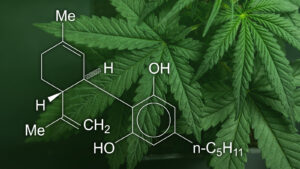Problems with Low Testosterone and Testing

Testosterone is a hormone present in both humans and other animals. The testicles are the primary source of testosterone in males. Women’s ovaries produce testosterone as well but in considerably lower quantities. The production of testosterone begins to rise dramatically throughout adolescence and then begins to fall beyond the age of 30 or so. Testosterone is most commonly connected with sex drive and is essential for sperm formation. It also has an impact on bone and muscle mass, as well as how men store fat in their bodies and even red blood cell formation. A man’s testosterone levels might also have an impact on his mood. To treat this various Testosterone boosters are used
- Testosterone deficiency
Low testosterone levels, often known as low T levels, can cause a range of symptoms in males, including:
- reduced sex desire
- fewer resources
- gaining weight
- depressive sensations
- moodiness
- self-esteem issues
- less body hair
- thinner bones
While testosterone production normally declines as a man ages, other circumstances might cause a dip in hormone levels. Testicular injury, as well as cancer therapies such as chemotherapy or radiation, can all have a deleterious impact on testosterone levels. Stress and chronic health issues can also lower testosterone production. Among them are the following:
- AIDS
- kidney disorder
- alcoholism
- liver cirrhosis
In mature women, testosterone levels gradually fall; nonetheless, low T levels can cause several symptoms, including:
- a lack of libido
- decreased bone strength
- inability to concentrate
- depression
Low T levels in women can be caused by ovary removal as well as illnesses of the pituitary, brain, and ovaries. Which can be treated by the best Testosterone boosters, which one can find in online stores.
- Testosterone levels Testing
Testosterone levels may be determined with a simple blood test. There is a wide range of normal or healthy testosterone levels in the circulation.
According to the University Of Rochester Medical Center, normal male testosterone levels vary between 280 and 1,100 nanograms per deciliter (ng/dL) for adult men and between 15 and 70 ng/dL for adult females.
Because ranges change between laboratories, it’s critical to discuss your results with your doctor. According to the American Urological Association, if an adult male’s testosterone levels are less than 300 ng/dL, a doctor may perform a workup to establish the source of low testosterone.
Low testosterone levels may indicate pituitary gland dysfunction. The pituitary gland delivers a signaling hormone to the testicles to increase testosterone production. Low T-test results in an adult man might indicate that the pituitary gland is not functioning correctly. A young adolescent with low testosterone levels, on the other hand, maybe undergo delayed puberty. Men with somewhat increased testosterone levels may experience few visible symptoms.
High testosterone levels can arise in less severe situations as well. Congenital adrenal hyperplasia, for example, which may affect both males and females, is an uncommon but normal source of increased testosterone production.Boys with greater testosterone levels may enter puberty early. Women with high testosterone levels may develop masculine characteristics. Abnormally high testosterone levels might be the result of an adrenal gland disease or possibly testicular cancer.
If your testosterone levels are abnormally high, your doctor may prescribe more testing to determine the cause.









